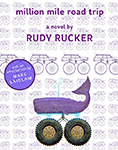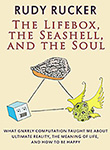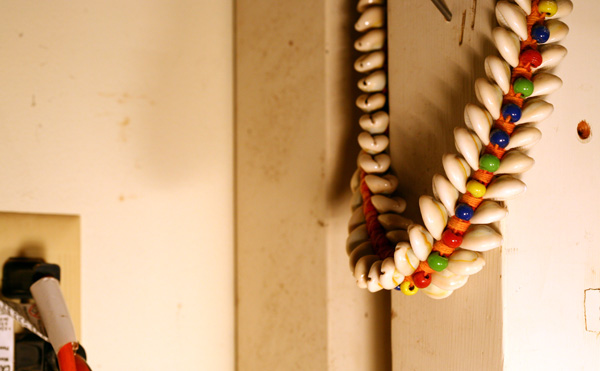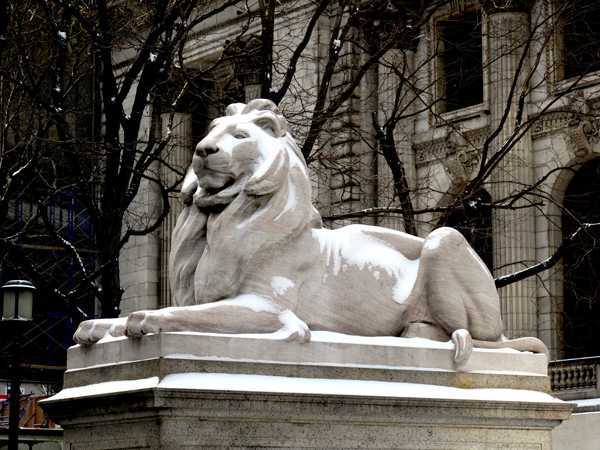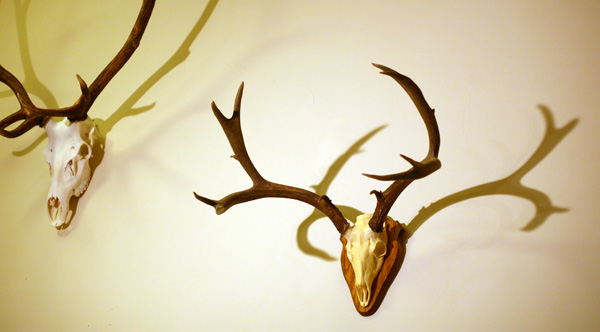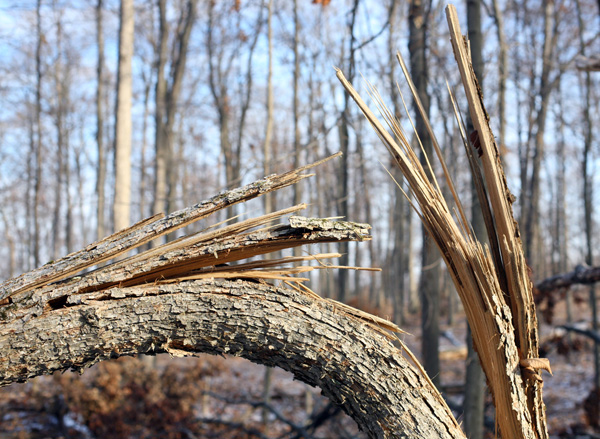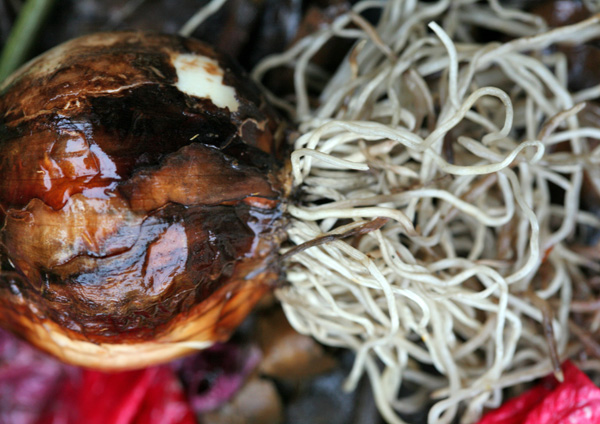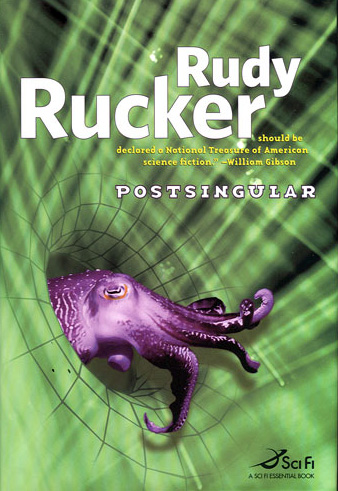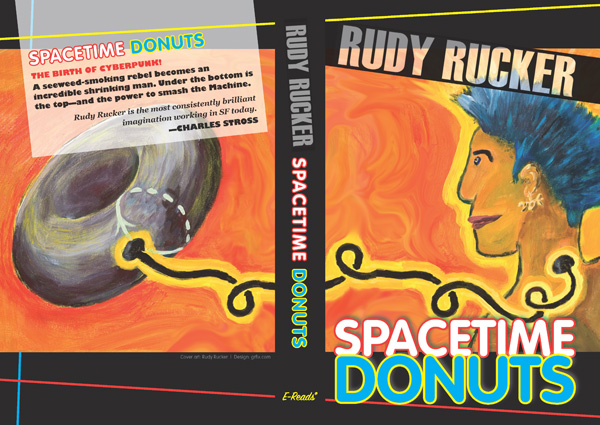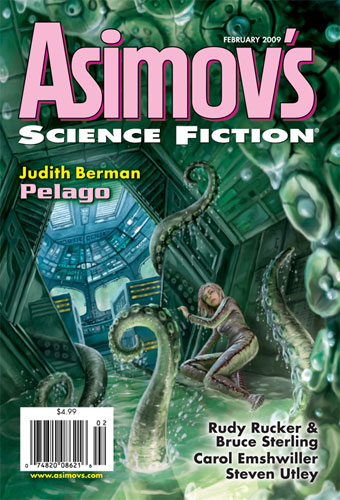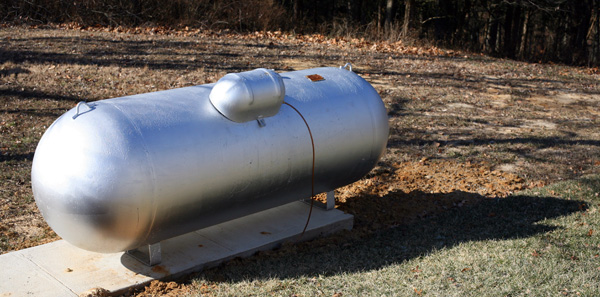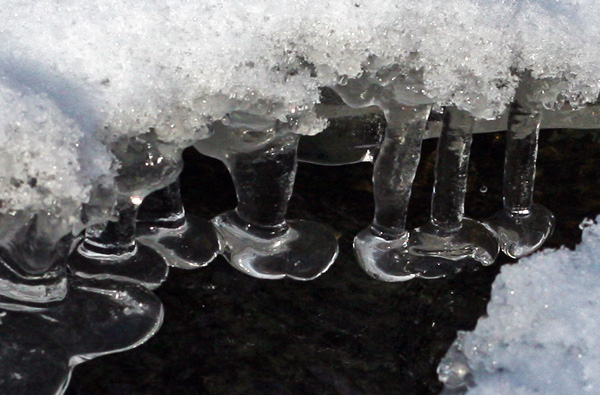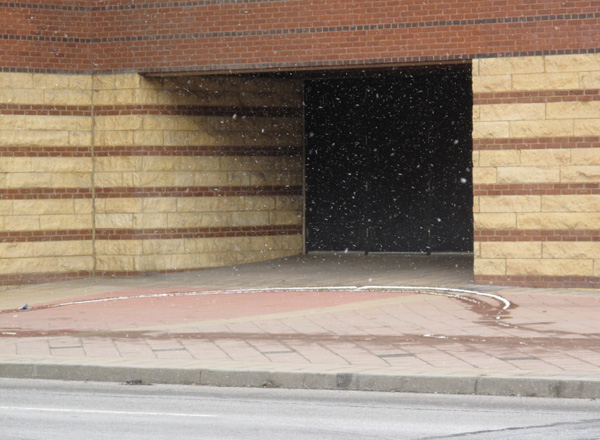This is a multi-day entry. I added to it on Jan 31, Feb 1, Feb 2, and finally Feb 3, 2009.
Jan 31, 2009.

I love how the wave looks in this picture. The reflection along the top.
I finished writing a new story called “All Hangy” with John Shirley last week. Some of my recent thinking about pathways to alternate worlds leaked into this tale.

I’ve been painting, as well as working on my novel Jim and the Flims. This picture is called Thirteen Worlds. I started it before Christmas—we were hanging up some glass ornaments and I was thinking about the reflections in them. I remember reading somewhere that a good exercise for a painter is to practice drawing circles—and then spheres.
I didn’t actually look at all that many mirror balls to paint this, it’s more that I thought about them a lot, although I did keep one reflective ball next to my easel so I could figure out how my hand with the brush would look. It seemed more interesting to have all thirteen artists be different. Thus, “Thirteen Worlds.” As usual, you can get prints or originals of my paintings at my paintings site, also this page has a link to my recent book of paintings, Better Worlds.
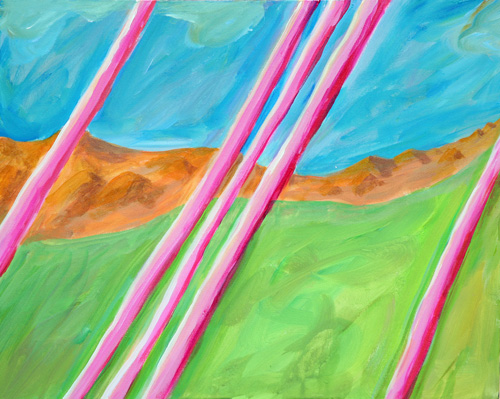
I’m working on a new picture now—today’s working title is Portal to the Flims. It has to do with my characters Jim and Weena finding a gateway or a transitional zone that leads to an alternate world of beings called flims. Getting the landscape was easy—I just took some leftover paint from Thirteen Worlds and painted a landscape in the shape of some shadows that were falling on my canvas. The straight lines are shadows of some telephone wires. They’re like symbolic of this being a portal zone. In a way the picture was nice like this. But, the thing is, I always like to keep painting and adding stuff.
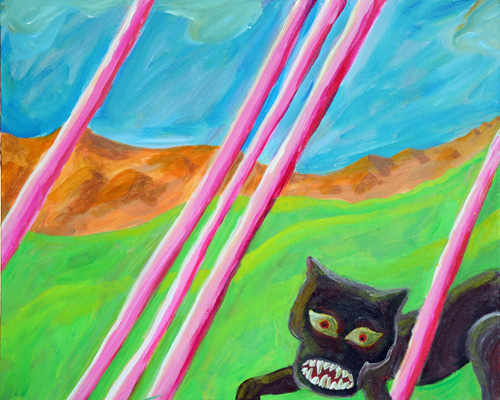
When I was in the woods in Louisville I had a mental image of a creature that I think of as a “yuel.” It was the size of a pony with powerful muscles under its dark skin. Kind of a flesh-eating horse. With a short rounded bull-dog head. Wider than you’d expect. If you’re alone, and you see a yuel, you’re probably going to die.
So today I tried to paint a yuel, and she didn’t come out the way I expected at all. No matter what I do, she keeps looking like cat, or some crude Rousseau panther. That’s the thing about painting. My subconscious mind has as much control over my muscles as does my conscious mind.
But I didn’t want a painting that’s mainly of a big cat! I don’t much like cats—but, uh, that’s why my “scary creature” looks like a cat! In any case, I’ll work on the yuel’s body, and add more critters to take this one a bit out of the limelight.
Feb 1, 2009.
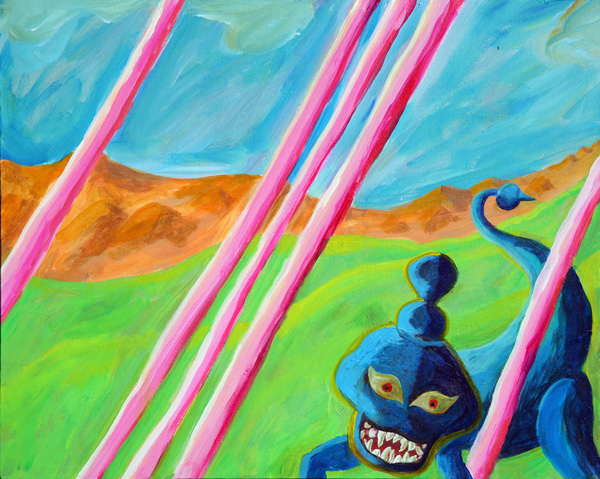
Alex’s comment that it’s easier to paint a dragon than a dog struck home. Also I was studying Jim Woodring’s anthology, The Portable Frank, last night—you can buy it in the “Store” section of Woodring’s site.. So this morning decided to overpaint my “cat” with something more demonic…a Krishna-blue Woodring-influenced demon!
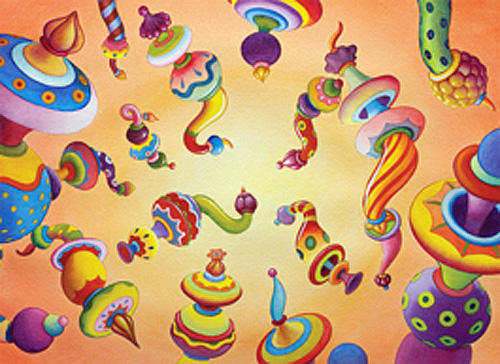
[Image of painting, “Jivas,” by Jim Woodring, 2008, which recently sold for $1200 at the Comic Art Collective.]
Continuing this afternoon, I started work on putting a Woodring-style jiva into my painting as well. As explained in the Wikipedia Woodring entry, “jiva” is Jim’s word for the rotationally symmetric, top-like shapes he likes to draw—the world means something like “soul” to Hindus and Jains. I’ll show you the new version tomorrow or the next day.
Feb 2, 2009.
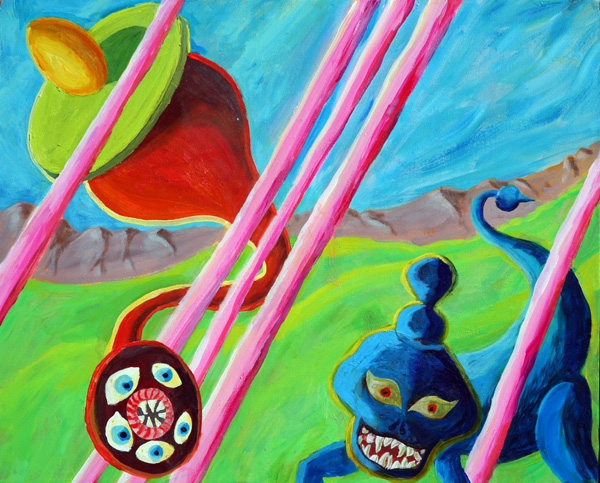
Okay, here’s The Flims with a jiva. I might still decorate it more. And I think I need one more thing—maybe something in the upper right hand sky. A flying woman maybe, standing in for my character Weena Wesson.
Feb 2, 2009.
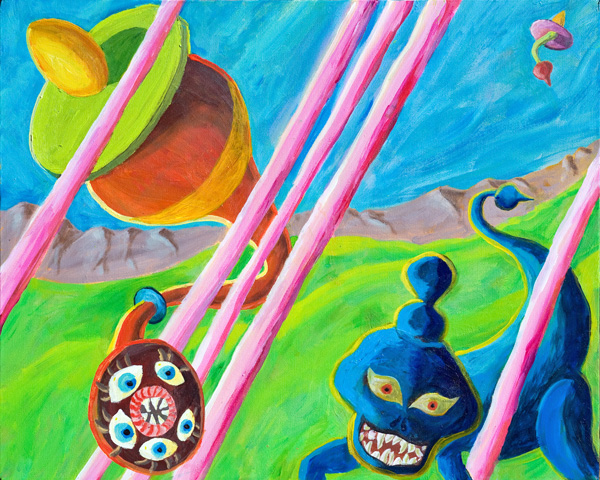
Okay, now I’m done. The Flims. Let me recapitulate and explain this once again.
I’m working on a novel called Jim and the Flims, about a man who finds a way to get to an alternate world overlaying our own reality. And this other world is inhabited by the so-called “flims.”
I wanted to see what the flims looked like. To start with, I took some leftover paint from Thirteen Worlds , and painted a landscape in the shape of some shadows that were falling on my canvas. The straight lines are shadows of some telephone wires. They’re symbolic of this being a portal zone.
And then I painted the creature in the lower right—this is a menacing beast that I call a “yuel.” When I was in Louisville in January, I imagined seeing something like this in the woods, although in my vision, the yuel was darker and more like a horse. But I decided to go for a Tibetan demon look.
The other two beings are modeled on what the cartoonist Jim Woodring calls “jivas,” they appear, for instance, in his book The Portable Frank. They’re a bit like free-floating souls—and, it now occurs to me, a bit like animated paint brushes.
Finis Coronat Opus.


